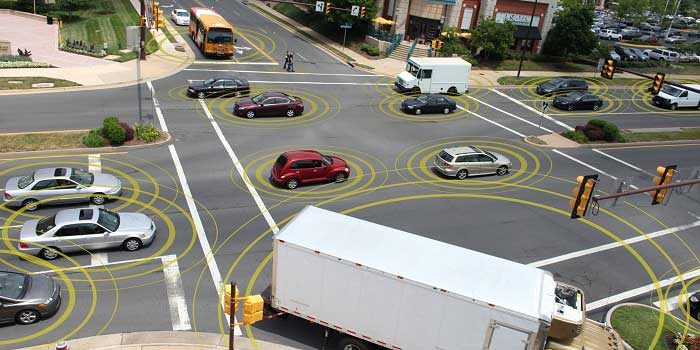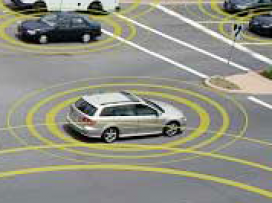Safety Pilot Study Will Test Viability of Cars Talking to Cars

Imagine that a car ahead of you on the highway sends an alert to your vehicle, warning you of upcoming slippery conditions that are causing drivers to slam on their brakes. This situation is an example of wireless technologies currently being tested that could transform automotive safety by enabling vehicles to exchange messages.
In a major step forward in understanding the viability of such safety technologies, on August 21, the U.S. Department of Transportation (U.S. DOT) and the University of Michigan Transportation Research Institute launched a year-long study that is the largest ever of its kind. This vehicle pilot program involves about 75 miles of Michigan roadway and approximately 3,000 passenger cars, trucks, and buses from eight automakers: Ford, General Motors, Honda, Hyundai-Kia, Mercedes-Benz, Nissan, Toyota, and Volkswagen. These vehicles will test various safety applications, such as forward collision warnings and lane change crash warnings, that could help prevent crashes and save lives.
A team of engineers at Volpe, The National Transportation Systems Center, will conduct the independent evaluation of data coming out of the study. Volpe will assess safety benefits, driver acceptance, and system capabilities of the technology, which will be used by the National Highway Traffic Safety Administration (NHTSA) to determine by 2013 whether to proceed with additional activities involving connected vehicle technology, including possible rulemaking (see sidebar for more information).
"It's simple really," said Transportation Department Secretary Ray LaHood in his August 21 blog post. "Providing better information to the driver leads to safer decisions behind the wheel." LaHood also spoke about the potential benefits of these technologies during a recent episode of the Today Show.
According to NHTSA, vehicle-to-vehicle technology could help prevent or reduce the severity of up to 80 percent of all crashes involving non-impaired drivers. By informing drivers of things they cannot see or dangerous situations ahead of them, drivers have more time to react, thereby reducing collisions.

Connected vehicles are now on the roads in Michigan testing the viability of vehicle-to-vehicle technology. (U.S. Department of Transportation photo)
The Connected Vehicle Safety Pilot Program is a multi-modal effort led by the Research and Innovative Technology Administration Intelligent Transportation Systems Joint Program Office and several agencies within U.S. DOT. This program will determine the effectiveness of connected vehicle safety applications at reducing motor vehicle crashes. The Safety Pilot Program will also assess the capabilities of current vehicle-to-vehicle (V2V) and vehicle-to-infrastructure (V2I) technologies through the deployment of these technologies in a large-scale field test. It will evaluate leading-edge technologies that provide the capabilities for vehicles to identify threats, hazards, and delays on the roadway and to communicate this information over wireless networks.
Volpe staff from the Advanced Vehicle Technology Division provide technical project management, device certification expertise, and independent evaluation of system benefits.
